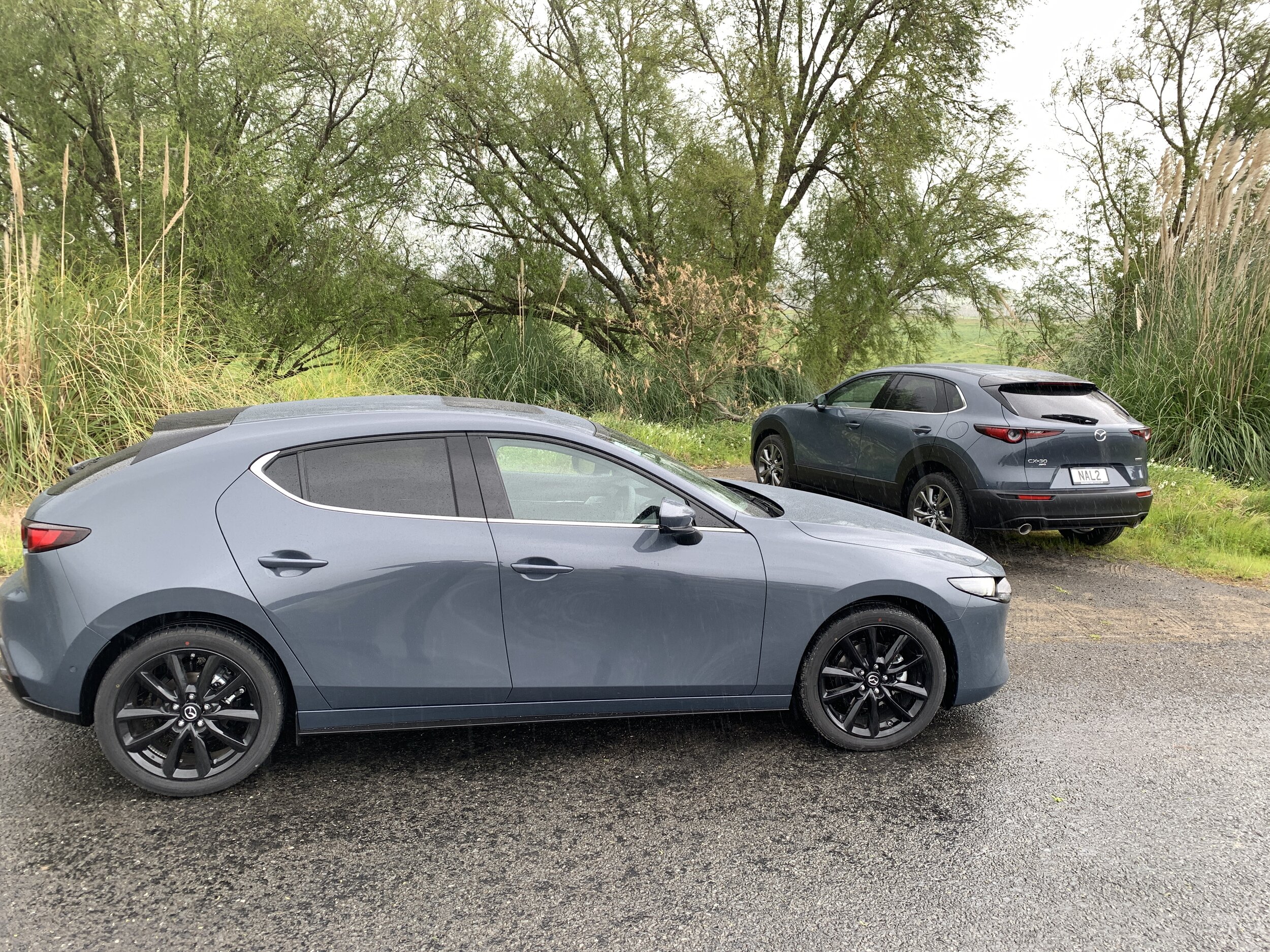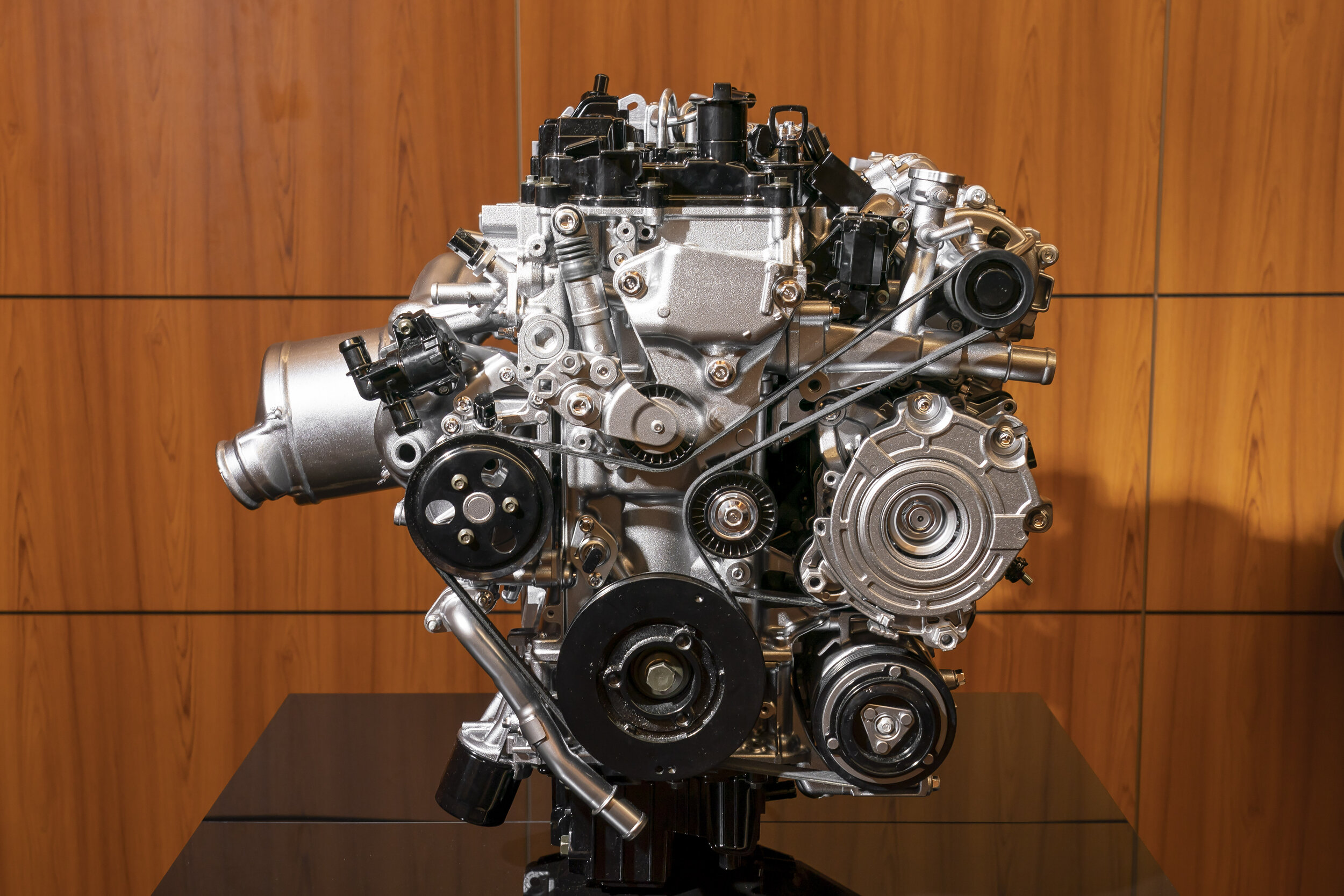Mazda CX-60/CX-90 first drive: Going for gold
/Hiroshima moves up a price class by adding extra plush - and engineering panache - to the usual premium play.
Read MoreHiroshima moves up a price class by adding extra plush - and engineering panache - to the usual premium play.
Read MoreHow well does an urban favourite sports utility cope with a non-urban landscape?
Read MoreSO you imagine the MX-30 is Mazda’s first go at electric motoring?
Not so fast. Certainly, what we’ll see entering the showroom on July 1 in two formats, price-undisclosed mild hybrid and $74,990 full electric, is - in respect to the latter - the first purchasable battery-pure product.
Read More
MORE power, using less fuel; simulates a diesel but with petrol as the fuel, sounds nicely growly in the CX-30 yet is almost eerily quiet in the other current recipient, the Mazda3.
If you need to explain the 2.0-litre SkyActiv-X engine and its Spark Controlled Compression Ignition set up at layman level, then that might be about as easy as it gets.
If more information is sought, you might like to mention that it gives best thrift opportunity in urban operation, lends most impressive thrust when pushing on quite a bit, though that’s not necessarily because it’s supercharged, because that ingredient is not used in orthodox manner.
Likewise, even though it has a hybrid component – the first Mazda here with this – it cannot really be categorised as being like, say, a Toyota Prius.
If this is starting to sound a bit complicated, then wait until you go through the finer points of this engine’s design.
As much as we’ve laid the groundwork with what this is all about, not least with the excellent backgrounder by Colin Smith some weeks ago (https://www.motoringnz.com/news/2020/8/24/the-science-of-spcci-explained), a succinct explanation based on what he gleaned from having driven the car in a pre-release format in Germany last year, the impact of direct experience is nonetheless little short of profound.
On technical grounds, it presents as such a mean feat of engineering as to be a ‘wow’, not just of the now, but perhaps for years to come.

The potential surely has to be huge and it’s a dead cert we’ll see more Mazda passenger models being crossed off for adoption of the X – which, if you hadn’t already twigged, is representative of the crossover from spark ignition to compression ignition.
Full explanation of why it is important, what it delivers and how it breaks the mould is not a matter of a one-sentence summary. The challenge for salespeople is obvious, all the moreso because its provision delivers with enough of a premium to deliver push the recipient Mazda3 hatch and CX-30 compact crossover into a new territory for both.
The first siting at $51,995 and the second at $54,990 means these platform-sharers respectively fly $3200 and $4000 above the Limited editions that have, until now, been the flagships of each line.
The cost loadings are not purely for this drivetrain but also reflect the cars being in an extra-lavish Takami spec that has not offered with either previously, but has featured in other models.
This brings additional luxuries - the Mazda3 gains a gloss black finish alloy wheel, 360-degree camera and a heated steering wheel whereas the CX-30 adopts high gloss 18-inch alloy wheels, 360-degree camera and a powered tailgate - though debatedly there’s nothing that shouts out as a ‘must-have.’
Also influencing the bottom line is that the engine here is in an ‘M Hybrid’ format, which introduces involvement with an integrated, belt-driven starter generator and 24-volt lithium-ion battery which assists the engine and recoups lost energy during deceleration.

The addition isn’t akin to the best-known hybrid system, from Toyota: The market leader’s has a bigger (and heavier) battery and more powerful electric motor. Yet M-Hybrid is hybrid enough to qualifies the SkyActiv’s to be considered as being petrol-electric and therefore as an interim toward Mazda’s first electric car, next year’s MX-30.
As we’ve said before, SPCCI’s potential to deliver will be eagerly monitored. For one, everyone will be keen to establish the value aspect; a focus that becomes important because of the premium over the ‘regular’ four cylinders that provision in these models in 2.0-litre and 2.5-litre formats.
Is it worth it? Quite literally, you’re talking bang for buck. A first taste suggests the on-paper expectations and on-road outcomes are going to take some consideration.
Mazda claims a 12 percent increase in torque around 1000rpm lower down in the rev range than evidences in the orthodox petrols also availing in the recipient cars, 10 percent lower CO2 emissions and a 10 percent improvement in overall fuel economy, including a 15-17 percent urban test improvement.
It also cites an optimal combined fuel economy rating of 5.5l/100km for the Mazda3 (and 6.0L/100km for the CX-30), both with the six-speed automatic that comes here.
The manual Mazda3 not coming here is the true champion. It claims 4.3 litres per 100km is close to Toyota Prius levels of efficiency, though that’s with the NEDC testing regime, a format that has now been largely shelved. Using the now preferred 'real world' (WLTP) fuel economy formula, the claimed consumption rises 1.1L/100km. FYI, the 2.5’s optimal drinking rate is 6.6L/100km.
So there’s that. The cited outputs of 132kW/224Nm also place it between the existing 2.0-litre and 2.5-litres, which respectively make 114kW/200Nm and 139kW/252Nm.
Even so, the performance from the new unit is tangibly different. Pre-drive talk about how much more ‘natural’ this engine’s response is, particularly in accelerative feel, how smooth it is on launch and when downshifted, how it delivers a special sound signature seemed awfully bold. Could it really make that much impact?
Actually, yes. From first impression gathered over three hours’ running in several cars, there’s a lot to seem highly promising. It feels stronger over a broader rev band (like a diesel), revs more enthusiastically to a higher redline (like a regular petrol), pulls more strongly (like a six cylinder) and has, in the CX-30, an intriguingly gruff note, almost like a five-cylinder unit.

There’s not an absolute perfection, in that the cars I drove all expressed a slight hesitancy in initial step-off that might be as result of these being all but brand-new (they’d just landed the week prior) or it could transpire to be a signature. Just like a diesel? Well, actually, very much so.
That also seems to be the one occasion where it feels tangibly difference to the regular engines. Even though the car runs in SPCCI mode most of the time, you’d be excused for not realising. The changeover from one mode to another is hard to detect. Hence, I guess, why there’s a specific display on the infotainment screen to identify what’s happening and when. Under spark ignition, the pistons in the infographic change to red. It didn’t seem to happen too often on my drive but I wasn’t looking too often, due to weather conditions on the day.
Our foray from Auckland deep into the Waikato synched with a massive storm rain of such lashing fury that the radar and camera guided safety and support systems in a CX-30 I was running in occasionally became so overwhelmed they warned of temporary shut down and it became prudent to slow to a crawl as the road became more like a river.
This, and other factors that need not be explored here, kinda ruined the idea I’d had of trying to get a handle on the engine’s efficiency through comparing with the outcomes I’d seen in a 2.5 Limited CX-30 I’d transferred from. Anyway, it really became such a battle of survival for a while that any deep thought about economy outcome will have to await a comprehensive test.
On the efficiency side, though, SkyActiv-X stands as a big element of the make’s corporate goal to reduce ‘well-to-wheel’ emissions by 50 percent from 2010 to 2030. In places where low C02 counts, the engine in the form as we see it is heading down the right road with claimed emissions of 127 grams per kilometre.
In respect to this, those of serious engineering bent will identify that Mazda has taken quite a remarkable route to achieve results that could conceivably also been reached by other means; fitting a smaller turbo engine under the bonnet or creating a petrol-electric hybrid.

Mazda freely admits the route it has forged was certainly a challenge and a half. A Homogeneous Charge Compression Ignition (HCCI) engine that simulates how diesels operate but with petrol, with compression rather than spark igniting a lean fuel-air mixture, took a lot of figuring. And time. And money. Mazda was not the first to try but is, to date, the only brand to have stayed the course.
Even though it uses a spark plug, unlike the diesel design that inspired it, SkyActiv-X is genuinely a compression ignition approach. The crux of the spark plug is that it can be relied upon in high-load situations but also to bring the lean air-fuel mixture to the point of instantaneous homogeneous combustion – the point where all the mixture combusts instantly at the one moment. By contrast, in a normal petrol engine, the spark plug initiates combustion in the piston chamber that moves away from spark plug and is less efficient.
If that’s befuddling, think of it as a colleague much smarter than I has put it. A normal combustion process is like a strip of matches lined up in row – one ignites and then quickly the other match heads ignite away from the initial spot of combustion. Compression ignition is like all the match heads in the row igniting at the same time. It results in a much faster combustion time.
Lift the bonnet and the X engine appears to fill out more of the engine bay than a regular unit. That’s really because of the supercharger, whose role is far from orthodox is this application, in that it’s here to push the massive volumes into the engine that are requisite to its operation. As explained in the previously published backgrounders.
With the electric age coming up fast, why bother with a different kind of petrol engine? Simply because, as much as it also intends to commit to battery-pure driving, Mazda also believe fossil fuels will continue to be part of our driving life for decades to come yet. However, it also believes we need to do more with what’s left.
It’s an interesting thought that the make that takes this attitude now was also steadfastly committed to another radical engine, one without the stop-start, up-down reciprocating motion of pistons and connecting rods.
Is there irony that the brand that stood so ardently behind the Wankel rotary, surely the simplest engine design ever, is now banking on another that stands out for a high degree of complexity? Well, perhaps, but you have to admire any company with the pluck to think outside the square. In this respect Mazda, one of Japan’s smaller makers, is a true giant.
Consumer uptake will decide the merits. Mazda NZ anticipates the SkyActiv-X editions will achieve around 15 percent of take-up within their respective model lines. The only ask of owners is that they feed it 95 octane or higher petrol (whether it accepts ethanol blend fuel is being looked into) and that’s all. Servicing-wise, it demands no special requirement.
Mazda here doesn’t know what other candidates are in line for SkyActiv-X, but it will not be surprised if Hiroshima widens the availability of this tech and continually refines it, the next obvious step being to perhaps go from a mechanically-driven supercharger to one running on electricity.

MotoringNZ reviews new cars and keeps readers up-to-date with the latest developments on the auto industry. All the major brands are represented. The site is owned and edited by New Zealand motoring journalist Richard Bosselman.